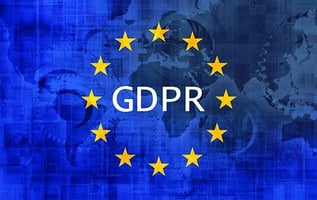The Past: The History of ESG and Responsible Investing
In the 1950s and 1960s, trades unions recognized that they could use their immense pension funds to positively affect their communities and the environment. For example, the International Brotherhood of Electrical Workers (IBEW) invested in affordable housing development, and the United Mine Workers invested in health facilities.
Also in the1960s, socially responsible investors started rejecting certain stocks—or entire industries—from their portfolios. They stopped investing in companies that they disagreed with on a moral and ethical level, including any businesses that supported war or fostered racism. Instead, they invested in companies they could feel good about—businesses that supported equality and green initiatives.
And in 1977, Reverend Leon Sullivan, a member of the General Motors board of directors, drafted a code of conduct for companies doing business with and in apartheid South Africa. The ‘Sullivan Principles’ spawned commissions that investigated companies that were investing in South African companies, effectively supporting apartheid there. The result was widespread disinvestment from South African companies.
By the 1980s and 1990s, the investment market recognized the increasing consumer demand for companies to act more socially responsible—and the financial opportunity that came with responsible investing.
The term ESG was popularized in 2004, in a report from the Who Cares Wins conference, which brought together investors, asset managers, buy-side and sell-side research analysts, global consultants, and government agencies and regulators. The Who Cares Wins report was publicly endorsed by 20 financial institutions, with combined assets under management of $6T. Participants overwhelmingly agreed that long-term investment success depended on non-financial Environmental, Social, and Governance factors. This announcement, coupled with the growing need to address climate change on a global level, further increased the momentum of ESG investing.
The 'E', the environmental factor, focuses on environmental conservation and includes carbon emissions, waste management, greenhouse gas emissions, biodiversity, air and water pollution, green energy, and deforestation. The "S' is the social aspect, including how the company’s operations affect people and relationships, both in and out of the company. It also considers employee diversity, working conditions, fair labor practices, child labor, customer satisfaction, philanthropy, and human rights throughout the company’s ecosystem. Finally, the 'G' refers to the governance factors—the standards for running the company—including business ethics, diversity of board members, internal corruption, executive pay, and compliance.
The Present: How has ESG Investing Performed?
In 2021, a record $649 billion flowed into ESG-focused funds, and Ninety percent of investors said that the COVID-19 pandemic caused them to take a harder look at companies’ ESG performance when they’re evaluating their investment strategy.
Aligning your financial investments with your personal morals sounds like a good idea, but what’s the ROI for ESG investing?
The results are underwhelming. In a 15-year study of ESG mutual funds and ETFs focused on U.S. stocks, those identified as having a low ESG risk—meaning their exposure to ESG issues is small and they’re dedicated to ESG initiatives—don’t perform statistically significantly better or worse than investments that have a higher ESG risk. "Overall, our findings suggest that ESG funds have neither systematically higher nor systematically lower raw returns or risk than the broader market."
Early investors benefitted from the increased popularity in ESG investing, but that outperformance is diminishing. Today, ESG investments don’t perform well from a financial return perspective. While highly rated ESG funds have a correspondingly higher amount of capital invested in them than lower-rated funds, the high or low rating had no effect on the performance of the funds.
Certainly, responsible investors consider more than the financial return on their ESG investments, including their emotional appeal—the idea that they’re doing good—and weighing the overall ESG performance of the company. But studies show ESG funds don’t deliver better (or worse) performance. Their performance is good enough for ESG investors—more than $120 billion poured into ESG investments in 2021, more than double the amount for 2020.
The Future: What’s Next for ESG Investing?
Experts point to several factors that are contributing to the lackluster performance of ESG investments, including disingenuous and exaggerated marketing claims (called ‘greenwashing’), bad actors, and the belief that the environmental, social, and governance components should be considered individually.
Regulators have responded. At the annual meeting in Davos in 2020, the World Economic Forum’s (WEF) International Business Council released an expanded set of “Stakeholder Capitalism Metrics.” The metrics were designed to bring better transparency, comparability, and consistency to companies’ ESG disclosures. Since 2020, more than 150 companies have agreed to the new metrics, including Bank of America, Fidelity International, HSBC Holdings, UBS, Unilever, Salesforce, PayPal, MasterCard, Nestlé, and IBM.
Then, in March of 2022, in a long-anticipated move, the Securities and Exchange Commission (SEC) proposed new rule amendments, which would establish new climate-related disclosure requirements in their registration statements and periodic reports. The new rules are designed to enhance and standardize climate-related disclosures to investors, increasing transparency at a time when the effects of climate change are becoming more obvious and catastrophic every day.
The new rules will give shareholders and other investors the information they need to make informed investment decisions. If the proposed changes are adopted, public companies would be required to disclose detailed reporting of their climate-related risks, climate-related effects on strategy, board management and oversight of climate-related issues, emissions, net-zero transition plans, and more. More than just reporting, the new rules require companies to continuously evolve their processes and policies to govern corporate climate operations. They’ll also help hold companies accountable to their commitment to green initiatives.
This is all in an attempt to increase the profitability of sustainable investing, to encourage more ESG investing and to influence companies to commit to environmentally friendly operations.
There’s little doubt that ESG investing is going to continue to grow—more than $500 billion flowed into ESG-integrated funds in 2021, for a 55% growth in assets under management in ESG-integrated products. Investors are trying to figure out how to capitalize on this investment, not just break even.
As new ways to realize return on ESG investing are developed and more and more companies are committing to sustainable business practices, investors’ are continuing to include sustainable investments in their portfolios.
Other posts you might be interested in
View All Posts
GDPR: Preparing for Higher Privacy Standards
Read More
The Risk Conversation in the Boardroom Part Two
Read More
Board Portal Software for Global Pharmaceutical Companies
Read MoreSubscribe to email updates
Get updates delivered directly to your inbox.